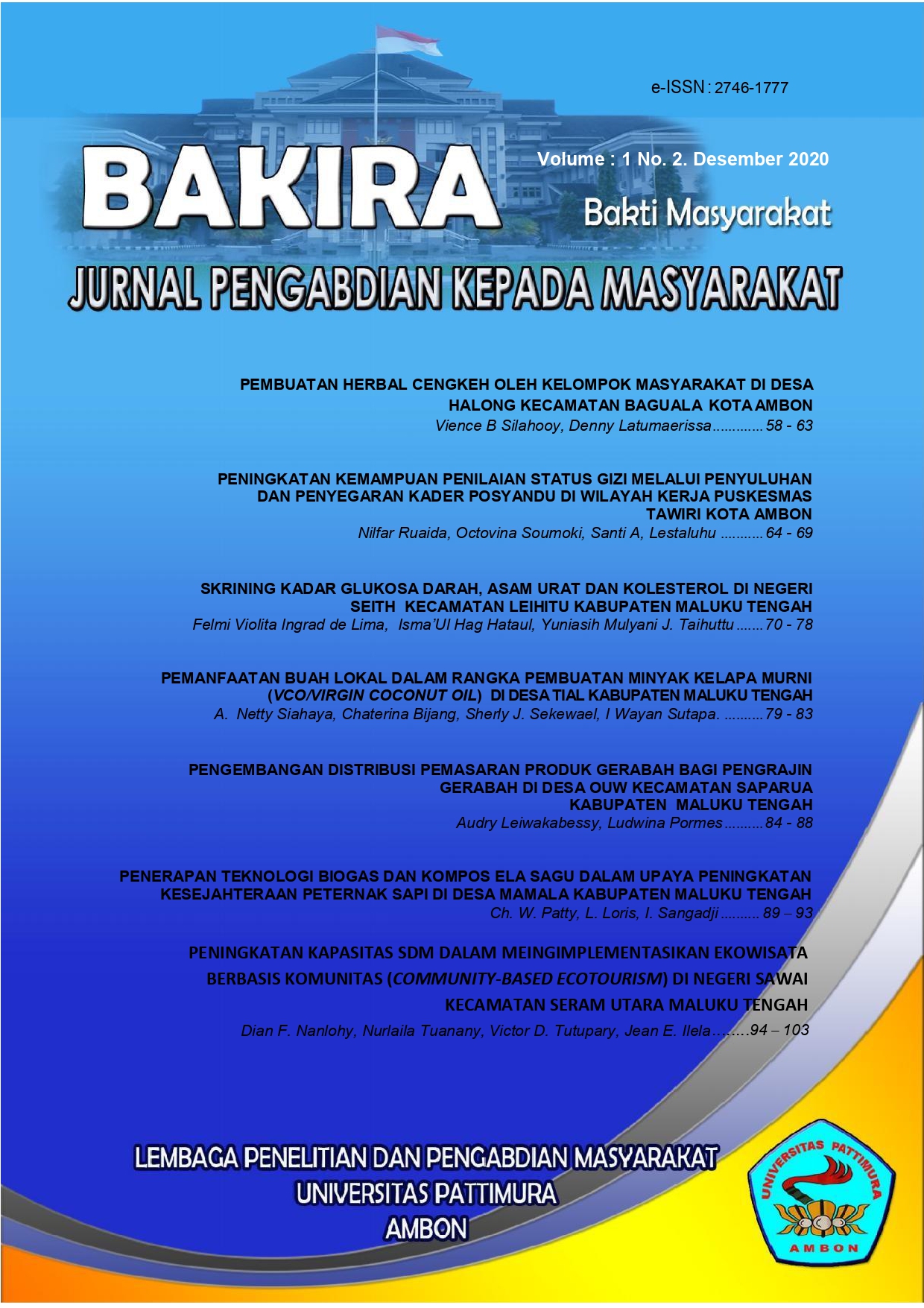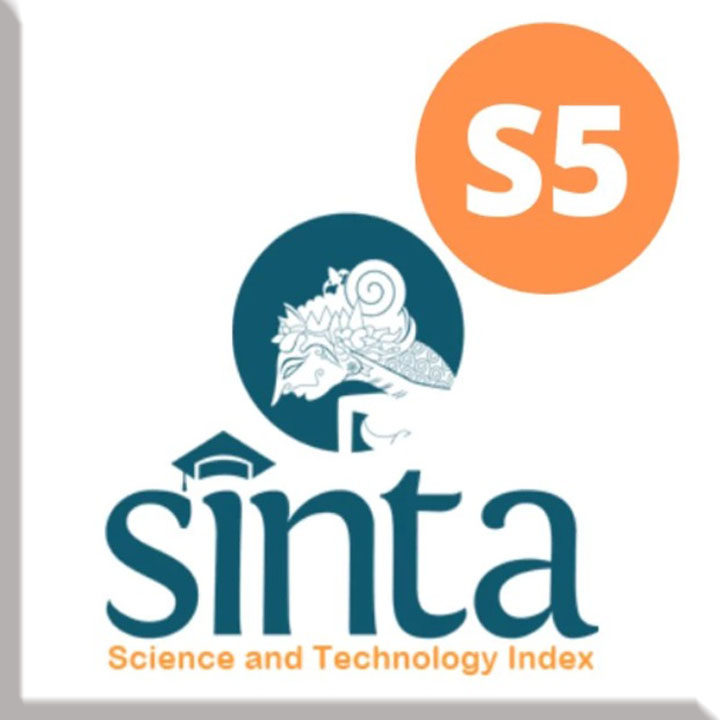SKRINING KADAR GLUKOSA DARAH, ASAM URAT DAN KOLESTEROL DI NEGERI SEITH KECAMATAN LEIHITU KABUPATEN MALUKU TENGAH
Abstract
Non-communicable diseases (NCDs) is a local and global health problem. The metabolic keys to control NCDs are blood pressure, blood sugar level, and cholesterol level control. The three keys, including uric acid level, play a role in cerebrovascular disease such as coronary heart disease and ischemic stroke, which leads to death. Screening for those factors is one step to avoid increasing cardiovascular disease, leading to decreasing in NCDs. This is a health service activity to provide blood glucose, uric acid, and cholesterol data to support health workers in Negeri Seith. The respondent's blood, whose age was more than 35, was drawn after signing the informed consent. It was using the easy-touch device meter to collect the respondent's blood. The result showed that largely Seith community has a normal blood sugar level (78%), normal uric acid level in males and females (95.5% versus 96.8%), but a high level of cholesterol (40.6%). This activity is carried out according to giving appropriate data to the community and health workers to prevent the NCDs.
Downloads
References
Al Mansour, M. A. (2020) „The prevalence and risk factors of type 2 diabetes mellitus (DMT2) in a semi-urban Saudi population‟, International Journal of Environmental Research and Public Health, 17(1), pp. 1–8. doi: 10.3390/ijerph17010007.
Vol.1 No. 2 Desember 2020 | BAKIRA - UNPATTI (Jurnal Pengabdian Masyarakat) Masyarakat) 78 78
Avci, E. Dolapoglu, A. Akgun, D.E. (2018) “„Role of cholesterol as a risk factor of cardiovascular diseases : Cholesterol : Good, bad and the heart‟â€. pp. 95–107. doi: http://dx.doi.org/10.5772/intechopen.76357
El-Ridi, R. Tallima, H. (2017) „Physiological functions and pathogenic potential of uric acid: A review , Journal of Advanced Factors , 8(5), pp. 487-493. doi: 10.1016/j.jare.2017.03.003
Global Health Estimates (2016)„“Death by cause, age sex by country and region 2000-2016.â€â€ŸGeneva: World Health Organization
Liyanage, L. (2018) „Diabetes Mellitus and Its Risk Factors‟, International Journal of Multidiciplinary Research , 4(9), pp. 114–117.
Maiuolo, J. et al. (2016) „Regulation of uric acid metabolism and excretion‟, International Journal of Cardiology, 213, pp. 8–14. doi: 10.1016/j.ijcard.2015.08.109.
Mauvais-Jarvis, F. (2018) 'Gender difference in glucose homeostasis and diabetes', Physiol Behav, 187, pp 20-23. doi: 10.1016/j.physbeh.2017.08.016.
Nouh, F., Omar, M. and Younis, M. (2019) „Risk Factors and Management of Hyperlipidemia‟, Asian Journal of Cardiology Research, 2(1), pp. 1–10. doi: 10.9734/AJCR/2019/45449.
Samaha, A. A. et al. (2017) „Associations of lifestyle and dietary habits with hyperlipidemia in Lebanon‟, Vessel Plus, (June 2020). doi: 10.20517/2574-1209.2017.18.
Simbolon, D., Siregar, A. and Talib, R. A. (2020) „Physiological factors and physical activity contribute to the incidence of type 2 diabetes mellitus in Indonesia‟, Kesmas, 15(3), pp. 120–127. doi: 10.21109/KESMAS.V15I3.3354.
Storhaug, H. M. et al. (2013) „Uric acid is a risk factor for ischemic stroke and all-cause mortality in the general population: A gender specific analysis from The Tromsø Study‟, BMC Cardiovascular Disorders, 13(August 2014). doi: 10.1186/1471-2261-13-115.
Warganegara, E dan Nur, N.N. (2016) „Faktor Risiko Perilaku Penyakit Tidak Menular‟, C, 5(2), pp. 88–94. Available at: http://juke.kedokteran.unila.ac.id/index.php/majority/article/view/1082.
WHO (2011) „Discussion paper: Prevention and control of NCDs: Priorities for Investment. Geneva: World Health Organization.WHO (2012).‟, European Action plan to reduce the harmful use of alcohol 2012-2020., (April), pp. 28–29.
Wild, S. et al. (2004) „Estimates for the year 2000 and projections for 2030‟, World Health, 27(5).
Yanada, F. and Taberima, B. (2015) „Faktor Risiko Kejadian Diabetes Tipe 2 Pada Penderita Diabetes Melitus di RSUD dr. M. Haulussy Ambon Tahun 2014‟, Molluca Medica, pp. 36–54.













